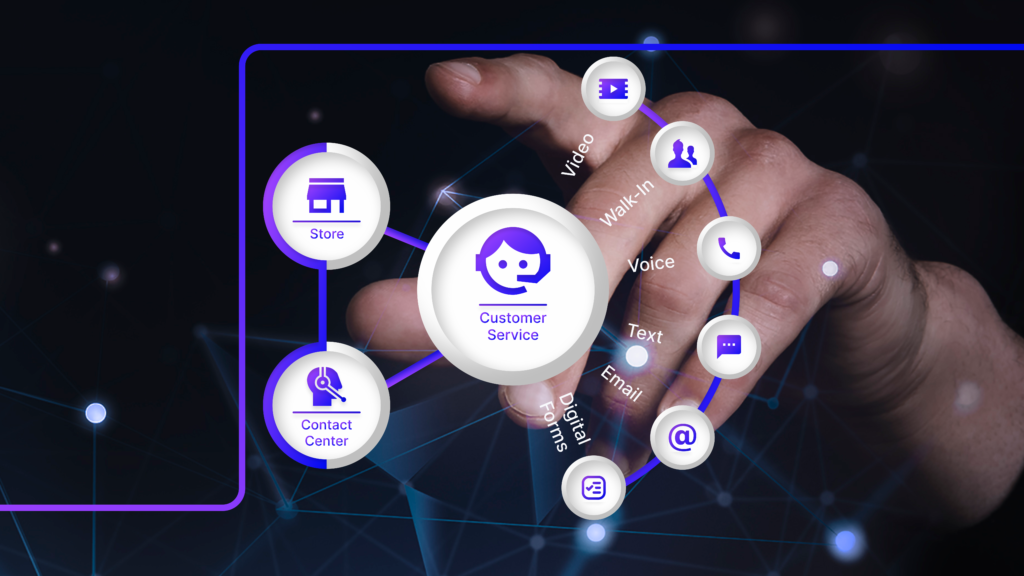Omnichannel customer service

Omnichannel customer services represent a transformative approach to customer engagement. In this digital era, businesses are striving to provide a seamless and consistent experience across various communication channels. Omnichannel support ensures that customers receive personalized service regardless of the channel they choose, be it through phone calls, live chat, email, or social media. This strategy is not just a trend but a strategic necessity in meeting the expectations of today’s customers.
What is Omnichannel customer service?
An omnichannel customer service is a strategic approach to enhancing the customer experience by ensuring consistent and interconnected interactions across various communication channels.
Businesses that adopt an omnichannel approach aim to break down communication silos by consolidating channels and integrating customer context from these channels into a single unified source. This unified source acts as a reservoir of customer information that can be accessed by teams whenever needed, regardless of the communication channel being used.
For instance, consider a scenario where a customer chooses to initiate contact with customer support through a chatbot. If the issue they’re facing requires an extended resolution time, they may be presented with the option to receive the response via email. Alternatively, they might be directed to a live agent available for chat or phone support. Importantly, the assisting agent will have access to all relevant contexts, ensuring that the customer does not have to repeat their concerns or inquiries.
The hallmark of a true omnichannel customer service experience lies in the ability to seamlessly transition interactions from one channel to another, creating a unified and continuous customer journey.
Benefits of Offering a Unified Customer Experience Across Channels
Implementing a unified customer experience strategy offers numerous advantages, benefiting both businesses and their customers. Let’s delve into some of these benefits:
- Consistency: By delivering a consistent experience across all communication channels, brands reinforce their identity and messaging. This ensures that customers receive a uniform level of service and information, regardless of the platform they choose. Consistency in the customer journey strengthens brand recognition and trust.
- Personalization: A unified customer experience empowers brands to gather data and insights from various touchpoints. This wealth of information enables businesses to craft personalized experiences for their customers. By comprehending customer preferences and behaviors, organizations can tailor their offerings and communications to cater to individual needs. This personalized approach not only enhances customer satisfaction but also cultivates long-lasting loyalty.
- Efficiency: Integration of diverse channels and systems streamlines business operations, leading to improved efficiency. With a unified customer experience strategy, organizations eliminate data silos, ensuring that their teams have access to a comprehensive view of customer interactions. This holistic perspective equips teams to deliver superior service and support, enhancing overall operational efficiency.
- Seamless Omnichannel Engagement: A unified customer experience empowers businesses to seamlessly engage with customers across multiple channels. For instance, a customer may commence product exploration on a brand’s website, add items to their cart, and finalize the purchase through a mobile app. A cohesive customer experience ensures a smooth transition between these channels, enhancing the overall customer journey.
- Enhanced Customer Loyalty: A unified experience helps build stronger customer loyalty. Customers are more likely to stick with a brand that consistently meets their expectations and provides a smooth experience, regardless of the channel.
- Increased Customer Retention: Satisfied and loyal customers are more likely to continue doing business with you, reducing churn rates. This can result in a more stable and predictable revenue stream for the business.
Organizations have compelling reasons to invest in unified customer experiences, and here are three exemplary illustrations:
- Eliminating Customer Friction: When customers move across channels and encounter consistent information, companies reduce the likelihood of confusion that can lead to frustration. By governing experiences with a cohesive brand identity and a set of customer promises, organizations instill confidence in their brand identity.
- Access to Comprehensive Customer Data: Unified experiences necessitate different departments to collaborate effectively, often resulting in the creation of a central data repository. Through this approach, businesses can connect their data platform with a Customer Relationship Management (CRM) system and construct unified customer profiles. These profiles ensure that context accompanies customers as they navigate their unique experiences.
- Enhanced Context for Contact Center Agents: To ensure consistent information delivery across channels, agents should receive contextualized data sourced from various touchpoints for each customer. This ensures that agents can provide informed and personalized support, ultimately enhancing the customer experience.

